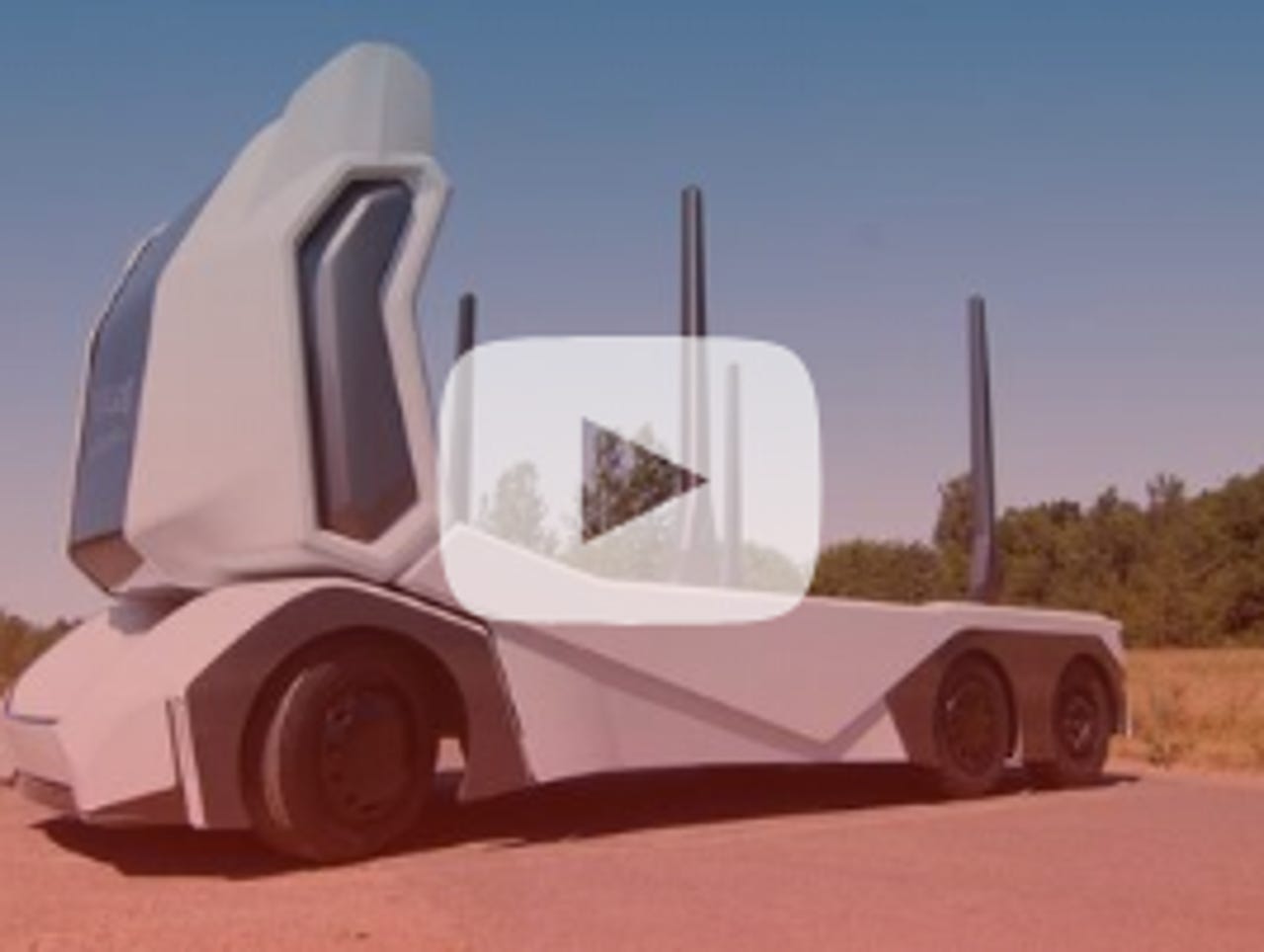This autonomous logging truck is a cross between a big rig and a Stormtrooper


Video: Swedish startup unveils all-electric autonomous logging truck
A Swedish startup has unveiled an all-electric, driverless logging truck.
The announcement came at the UK's Goodwood Festival of Speed, and it's another sign of the increasing push toward automation across industries that rely on ground transportation.
Also: Construction is embracing automation as legacy players team up with tech innovators
In this case, safety is the driving concern. Logging has the single highest fatality rate of any industry in America, and it's one of the most dangerous industries internationally. Automation could reduce workplace accidents.
Einride, based in Stockholm, is the startup behind the logging truck prototype, which looks like a cross between a big rig and Stormtrooper. All-electric, it has a range of about 120 miles on a charge and can travel about 50 mph fully loaded (it travels significantly slower than that in the forest).
"With the T-log, we've created a vehicle that can withstand the rigors of a demanding environment. It is uncharted territory for us, but also an enormous market for battery-powered [autonomous vehicles]," said Robert Falck, CEO of Einride, during a presentation.
Einride is using NVIDIA's DRIVE self-driving platform. It can operate autonomously or can be controlled via a remote teleoperator.
"It has no driver's cab but can be remote-controlled by a human operator from hundreds of miles away using Phantom Auto teleoperation safety technology designed to provide robust, minimal latency telecommunications even with 4G," according to Einride.
The elimination of a driver's cab has allowed Einride to keep size down, a crucial consideration for an all-electric vehicle hauling heavy loads.
"No driver's cab enables a smaller vehicle, increased loading capacity, greater flexibility, lower production costs, lower operating costs and optimized energy consumption, allowing the T-log to run solely on batteries, even in difficult environments."
We'll continue tracking the spread of driverless automation across a variety of off-the-radar industries, where its impact is likely to be felt sooner than it will be in most consumer markets.